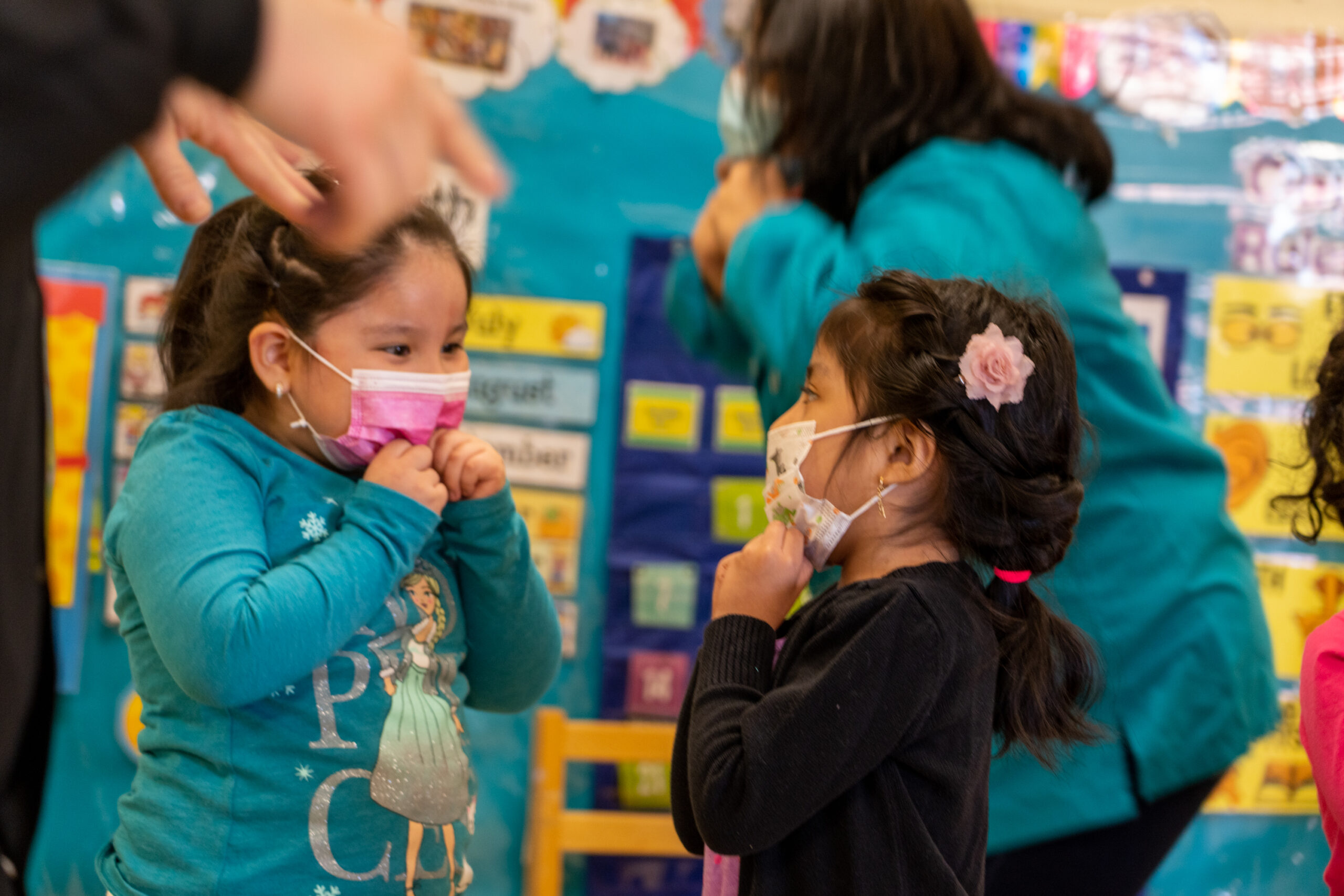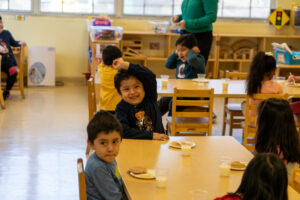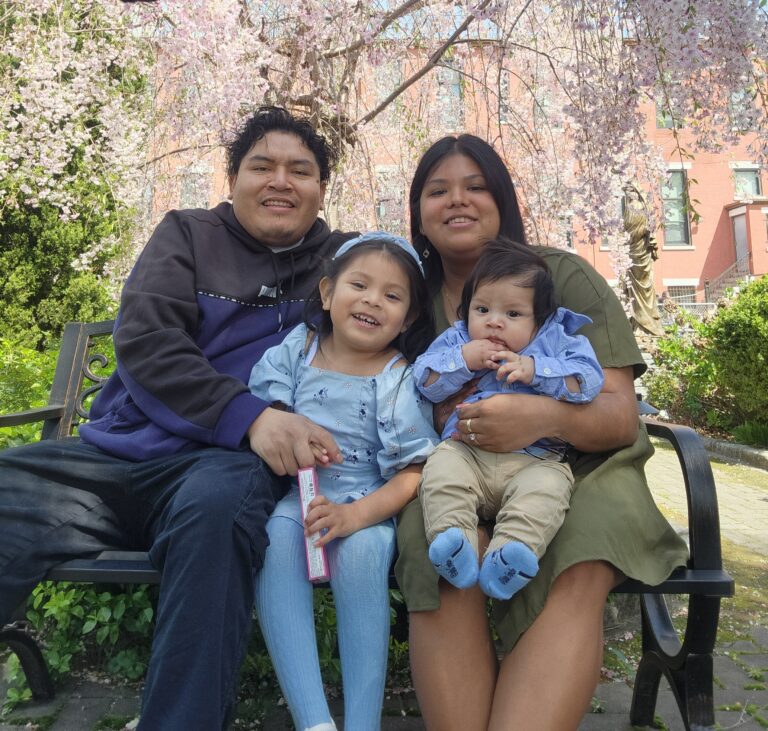By Michele Neuhaus, LCAT, LMHC, CCLS
Program Director, 0-5 Early Childhood Mental Health Initiative
 As New York City families prepare for the return to in-person school on September 13, there’s one group of children who may need special care: the 0-5 set, babies and preschoolers who may never have been to in-person school or child care, and who haven’t experienced or don’t remember pre-COVID life. How do we help these children adjust? What mental health pitfalls and opportunities should parents look out for?
As New York City families prepare for the return to in-person school on September 13, there’s one group of children who may need special care: the 0-5 set, babies and preschoolers who may never have been to in-person school or child care, and who haven’t experienced or don’t remember pre-COVID life. How do we help these children adjust? What mental health pitfalls and opportunities should parents look out for?
If you’re a parent with a child 5 years old or younger, you may be feeling worried about how the COVID-19 pandemic has affected your child’s development, especially their social development. If your child is starting day care or preschool for the first time, or if they’re returning to in-person school for the first time since the pandemic, you may wonder about the usual stuff, like how they will get along with their teacher and make friends. You likely also are concerned about pandemic-related issues. For example, your child may not have interacted very much with people outside your family, been in a room with strangers, or in a classroom setting. They may have been learning remotely, which means they did not interact directly with peers and teachers. They may not understand “social distancing” but be expected to observe it. And how can they read their teachers’ and classmates’ nonverbal cues when everyone’s face is covered?
While these are daunting challenges for sure, there are things you can do to prepare your child and ensure their healthy growth and development this year. Below are seven tips to help reduce anxiety (for children and parents!) during the transition.
- Start now to help your child into a routine. When children are faced with the unknown, they feel more anxious. This can happen with any unexpected change, and toddlers and young children often react with “bad” or unwanted behaviors, such as regression to younger ages, tantrums, and refusing to listen. With infants, you might experience excessive crying or feeding difficulties. Routines are an excellent way to counter this. Routines help children feel safe by offering structure and letting them know what will happen next. Start now setting up a predictable structure, from morning wake habits to meals and activities to bedtime. Remember to add in quiet and fun times, too!
- Gradually return to activities that often take place in a classroom or in the community. Now that you are introducing a routine to your child, make sure it includes activities that often take place in an in-person school classroom or in the community. Using play can be a fun way for parents to help toddlers and preschoolers get ready to get back to school. It’s the primary way young children explore and learn about their world. Set up a pretend classroom and have your child practice some of the expected routines such as washing hands or keeping the requisite distance from other students. If you have a preschooler, have them practice waking up and getting dressed at the right time, packing up their book bags, and participating in a goodbye ritual, such as a quick hug from you. For an added bonus, invite over a friend the same age, or even someone from your child’s class if possible, and observe the safety rules they’ll be expected to follow at school, such as wearing face coverings (check with your child’s school for COVID-19-related and other guidelines). This is a great way for your child to do a “dry run” and practice skills like turn taking and cooperative play, skills that are essential for success in pre-K. To make most of these pretend in-person school play preps, end each session with clean up time, having the children practice putting away the toys and transitioning to a new activity when they are done. A visual schedule and/or timer can be helpful and simulate a preschool setting.If your child is an infant, the focus should be on the need to feel a sense of security while transitioning away from you. Have your baby spend some time away from home with another family member whom you feel is safe to be around your child. If this is not possible, try setting up your baby up with a toy and watch them from a safe distance as they get accustomed to separating from you in a secure and healthy way. Remember to use praise and smiles upon return, which positively reinforces your baby’s independence.Once you’ve prepped them with words and practice, visit the school or child care center if you can and take photos that you and your child can look at later. Putting the photos into a book or album together can be another fun activity.For both infants and toddlers, getting them ready for school involves a successful nighttime and bedtime routine. Practice getting them used to getting ready for bed with a routine that includes activities such as bath time, brushing teeth, and quiet time, like reading a book. Try to limit screens around this time, as they tend to keep your child’s brain more active. You want your child to learn to wind down and benefit from a good night’s rest so they wake up refreshed and ready for the day ahead.
- Help your child feel secure about doing activities on their own. During the pandemic, you may have found it hard for your child to separate. This can be for a variety of reasons, but clingy behaviors are generally a way for children to master anxiety or feelings of fear. As a parent or caregiver, you help them feel safe. Start by doing normal daily activities and slowly start separating from your child until they can sit and spend alone time working on activities. If they need help thinking of one, give them a task, such as drawing a picture or building something specific with Legos. Tell your child you want to see it completed when you come back. The calmer and more secure you are as you give the directives, the more excited the child will be to complete the task. Use positive praise when you are reunited, as this will positively reinforce the child’s budding independence. Eventually, your child will be able to tolerate sitting away from you, working on an activity while you work on your activities at a distance from them.
- Talk about the pandemic and that it is getting safe to return to our pre-COVID lives. If

Breakfast time at our Head Start Corona center
you’ve told your preschooler about the “bad” virus and how it’s not safe to be out and about, they might be afraid to venture outside and spend time indoors with other people. Talk about why we have been home, and why it’s become safer to return to in-person activities, in developmentally appropriate language: “We’ve been home together for a long time because of COVID. COVID is a virus that can make people get very sick. But now we have a special shot, like you get at the doctor’s office, to keep us safe. Mommy is getting ready to go back to work, and you will go back to school. The shot is only for people older than 12 years old, but wearing your mask, and staying a safe distance from other people when you’re eating or can’t wear one, will keep you healthy.”
- Read together with age-appropriate books. Reading materials can range from digital stories about the pandemic (Why We Stay Home: Suzie Learns About Coronavirus); videos about big feelings (https://sesamestreetincommunities.org/topics/emotions/); and books about community life (My Neighborhood by Maddie Frost and Amy Pixton) and preschool (Maisy Goes to Preschool by Lucy Cousins). Even very young children can benefit from photos of classrooms and places in the community, so mix in photos of your actual preschool that your child can look at on a tablet or phone. Discuss what different places are like and practice the expectations that might happen in each setting.
- Help them “read” people absent certain facial cues. Although there is not yet any conclusive research regarding whether masks affect child development, and at least one study showed that face coverings had no effect on children’s ability to read expressions, it does make sense to be mindful that children with limited or developing language skills cannot see more than someone’s eyes when interacting with face coverings. This may raise new challenges for the young child who may not clearly understand what the adult is expecting from them. If you’re concerned, talk to your child’s teacher. Some ideas are for adults to be clear and concise when giving directives, getting down to the child’s level as much as possible, and using songs and hands to promote language development, learning, and routines. If you have particular concerns about your child’s development in this area, you could ask their teacher if wearing a clear face covering is possible. And remember that your child’s teacher is likely already skilled at using elements such as vocal inflection or physical gestures to aid in communication. Plus, you and your family members can talk with your child face-to-face without face coverings at home. Also remember that children in certain cultures that traditionally use face coverings, as well as children with visual impairment, all learn to communicate effectively.
- Be mindful of your own stress. Your child needs you to help them regulate their feelings and emotions. If you’re stressed, chances are your child will react in an equally stressed way. Engaging in self-soothing and calming activities alone or together with your child are great ways to manage stress (art together, yoga, listening to music, movie night, etc.). Self-care communicates that you, too, pay attention to emotions, and it teaches that it is ok to have big feelings — and that they can be managed in positive ways.
Have specific questions? Ask them in the comments section below and our experts will answer them.
If you feel your child or family would benefit from additional support, please call our referral line at 718-530-6892. We stand by and ready to help.
Learn more about our 0-5 Early Childhood Mental Health Initiative and our Early Childhood Education programs.






